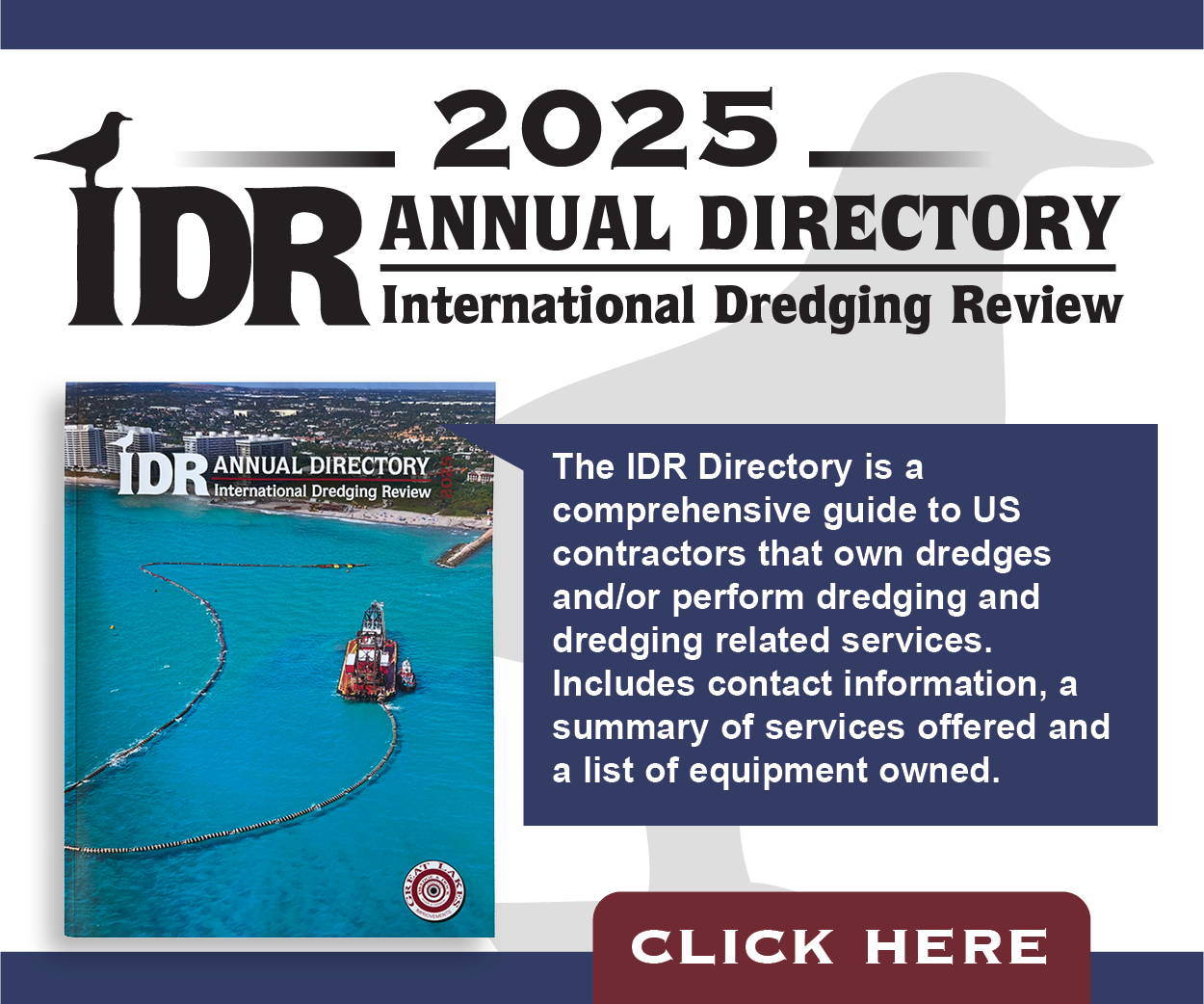Atomized Mist Suppresses Dust, Reduces Wastewater For Terminals
By Mike Lewis
Dust Control Specialist, BossTek
Facing increasing regulatory attention to dust suppression and wastewater issues, ports and bulk storage operators along American waterways are finding that atomized mist technology can significantly mitigate both issues.
As operators increase dust management activities, they are discovering that many previous dust suppression methods are inadequate and may actually exacerbate the issue.
In the past, hoses were (and in some cases still are) the standard method used to address dust emissions caused by the loading and unloading of ships and to suppress dust on storage piles. Carried by workers or mounted on the top of a crane’s boom or jib, hundreds of gallons of pressurized water per minute from the hose douses material as it follows the scoop’s path during loading and unloading.
Although this method does offer modest surface suppression, it saturates the commodity and causes tremendous runoff as it drains dust, fine particles and product with it into the waterway. Moreover, it has proven ineffective against fugitive airborne particles.
Currently, there is no water-free solution to airborne dust emissions. But operators are finding that powerful atomized mist cannons offer airborne and surface dust suppression far superior to hand-held or mounted hoses with a fraction of the water usage, minimizing cargo saturation and runoff.
Slipstream Effect
For water droplets to effectively suppress airborne dust, droplets and particles must be roughly equal in size to collide, allowing their combined weight to drag them to the ground.
Hoses typically produce water droplets that range between 200 and 10,000 micrometers. The droplets create air currents around them as they fall, called the slipstream effect. Like the air traveling around an airplane wing giving it lift, large droplets cause the same effect on a much smaller scale. When the tiny particles encounter the larger droplets, they get caught in the slipstream, which causes them to travel around the droplet rather than be absorbed.
Atomized Mist Technology
In contrast, atomized mist droplets range in size between 50 and 200 micrometers, a far more effective range for capturing breathable dust particles. Atomized droplets are light enough to travel with the dust, collide with the particles and properly suppress them at the point of emission before they travel offsite.
Offering both airborne and surface suppression, atomized mist technology can be fixed on a tower mount reaching as high as 30 feet. The equipment can also be mounted on a mobile carriage or skid or delivered in a fully self-contained system on a mobile trailer with water tank and genset.
Large designs feature a specially designed barrel with a powerful 60 hp. industrial fan in the back, protected by a mesh cage with a misting ring on the front. A booster pump sends pressurized water through the circular manifold, which is fitted with atomizing nozzles. The nozzles fracture the water into an engineered mist, throwing billions of tiny droplets in a cone-shaped plume up to 328 feet with a coverage area of up to 280,000 square feet, equivalent to five American football fields, when using the 359-degree oscillator.
Control of pressure and volume can be handled via either digital touch screen display mounted on the unit, remote hand-held device or by programmable logic control. Setup can be done by one person using a pickup or small vehicle and connecting to water and power, after which the worker merely keys in the settings and walks away.
For hydrophobic materials such as coal and petcoke, dust is most effectively suppressed using a surfactant in the mist, and the units feature an optional dosing pump, allowing operators to precisely meter any additives.
Wastewater Control
According to the EPA, “The federal Clean Water Act requires that all municipal, industrial and commercial facilities that discharge wastewater or storm water directly from a point source (a discrete conveyance such as a pipe, ditch or channel) into a water of the United States (such as a lake, river or ocean) must obtain a National Pollutant Discharge Elimination System permit.” As many operators have discovered, inadequate wastewater treatment can result in stiff fines.
The challenge for port operators is knowing every regulated property of each bulk material that is unloaded. In most instances, bulk handlers have a good grasp of the qualities and requirements of the stored substances. Even if there is runoff control such as curbs, drainage ditches or settling ponds, large volumes of runoff can easily overflow, leading to wastewater violations.
Atomized mist technology can also reduce standing water, an issue toward which the Occupational Safety and Health Administration has directed increasing attention due to the effect on workplace safety, as well as health issues associated with vermin and mosquitos.
By taking advantage of atomized mist technology, port operators have the mobility and versatility to easily move the dust solution throughout the facility. Once set, mist cannons are a one-touch procedure to turn on with no labor needed for continuous operation.
The improved airborne suppression, long reach, wide area coverage, minimal water volume and low cost of ownership are among the reasons why atomized mist is quickly becoming the standard for industries such as ports/shipping, demolition, bulk storage, outdoor mining and tunnel boring, among others. With mounting regulatory scrutiny, managers of port facilities around the world are experiencing the return on investment from atomized dust suppression technology.


